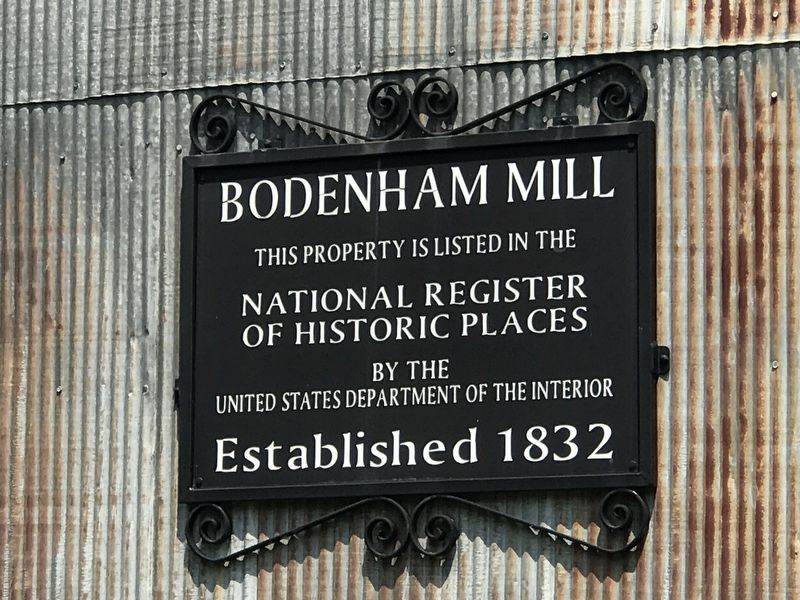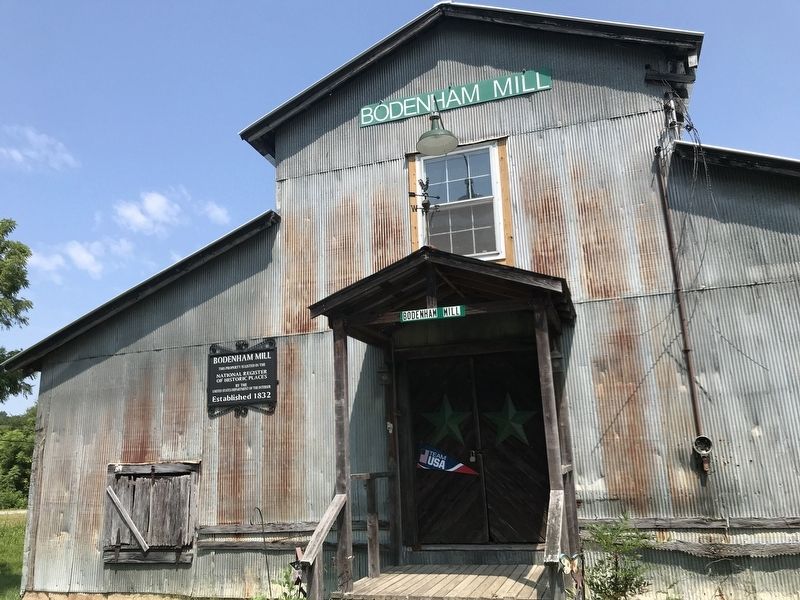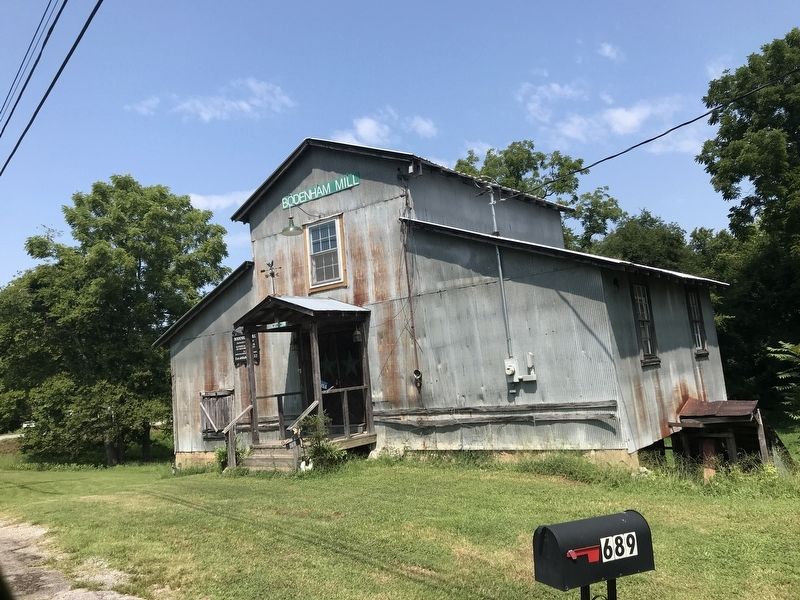Near Pulaski in Giles County, Tennessee — The American South (East South Central)
Bodenham Mill
This property is listed in the
National Register
of Historic Places
by the
United States Department of the Interior
Established 1832
Topics. This historical marker is listed in these topic lists: Architecture • Industry & Commerce. A significant historical year for this entry is 1832.
Location. 35° 13.987′ N, 87° 9.324′ W. Marker is near Pulaski, Tennessee, in Giles County. Marker is at the intersection of Bodenham Road and Weakly Creek Road, on the right when traveling west on Bodenham Road. Touch for map. Marker is at or near this postal address: 689 Bodenham Road, Pulaski TN 38478, United States of America. Touch for directions.
Other nearby markers. At least 8 other markers are within 8 miles of this marker, measured as the crow flies. Trail of Tears (approx. 4.3 miles away); James J. Pennington (approx. 6.3 miles away); Martin College (approx. 6.9 miles away); Giles County's First Courthouse (approx. 7.1 miles away); Grissom Colonial Hall (approx. 7.2 miles away); History of Colonial Hall (approx. 7.2 miles away); Governor John C. Brown House (approx. 7.2 miles away); Church of the Messiah (approx. 7.3 miles away). Touch for a list and map of all markers in Pulaski.
Regarding Bodenham Mill. From the National Register of Historic Places registration form for the property, submitted in 2013:
… Rebuilt ca.1930 in rural Giles County, the grist and flour mill served as the center of trade and activity within the community for twenty-five years. At the time the present mill was rebuilt, following loss by fire, Bodenham was already in the midst of a gradual decline, having lost its post office by 1914. Transportation in the area had improved as highways were completed, allowing farmers to travel to larger mills in cities like Pulaski, the county seat. Despite the decline, the Bodenham Mill survived for the next twenty-five years, serving a more localized region. Early in its history, the mill drew farmers from far distances; however, by the 1930s, the clientele was primarily smaller farmers who wanted more specialized, personalized services. The water-powered technology of the Bodenham Mill remained relatively unchanged since its original construction in the 1830s. However, the continued success of the mill allowed for the introduction of more advanced, and efficient equipment that survives within the building's interior. As such, the mill managed to keep pace with new milling techniques while retaining a smaller, personalized clientele in and around Bodenham. The present Bodenham Mill operated ca.1930 to ca. 1955. …
Also see . . . Bodenham Mill. National Register of Historic Places registration form. (Submitted on August 8, 2021, by Duane and Tracy Marsteller of Murfreesboro, Tennessee.)
Credits. This page was last revised on December 23, 2021. It was originally submitted on August 8, 2021, by Duane and Tracy Marsteller of Murfreesboro, Tennessee. This page has been viewed 307 times since then and 67 times this year. Photos: 1, 2, 3. submitted on August 8, 2021, by Duane and Tracy Marsteller of Murfreesboro, Tennessee.


